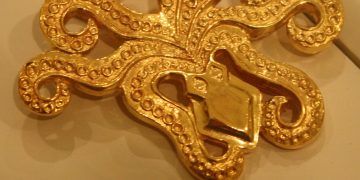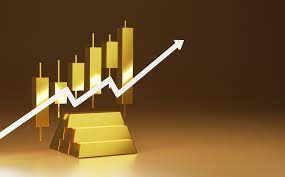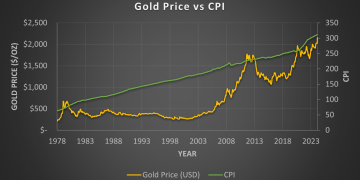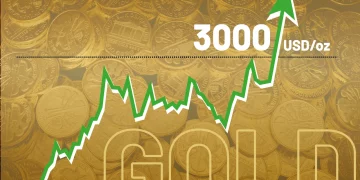Introduction: The Evolution of Gold Investing
Gold has long been considered a safe-haven asset and an essential part of many investment portfolios. For centuries, traditional financial advice has focused on the metal’s role as a store of value and a hedge against inflation, economic instability, and geopolitical risk. However, as financial markets evolve and technology accelerates, new-age tools and strategies, such as artificial intelligence (AI) models and data-driven algorithms, have entered the arena, promising more sophisticated and precise ways to invest in gold and precious metals.
As an investor, you may be asking: Is traditional gold advice still relevant in today’s high-tech world, or should I pivot to more modern strategies? In this article, we will explore the enduring value of classic gold advice, the rise of AI-based investment tools, and how to balance both in your investment strategy for 2025 and beyond.
Classic Expert Tips That Still Hold Value
For decades, gold has been hailed as a reliable store of value and an important asset to hedge against inflation and currency devaluation. These classic investment principles are rooted in centuries of financial wisdom and historical precedent.
- Gold as a Hedge Against Inflation: Traditional advice often emphasizes the role of gold as an inflationary hedge. Historically, when inflation rises and the purchasing power of fiat currencies weakens, gold tends to hold its value or even appreciate. Investors have long used gold to protect their wealth from the eroding effects of inflation.
- Gold as a Safe-Haven Asset: During times of financial crisis or geopolitical instability, gold’s price typically rises as investors flock to safety. Whether it’s a market crash, a banking collapse, or a military conflict, gold tends to outperform other assets due to its long-standing reputation as a safe haven.
- Portfolio Diversification: Gold has been an essential part of many diversified portfolios, helping to reduce risk by offsetting losses in other assets such as equities and bonds. The uncorrelated nature of gold relative to traditional financial markets makes it a valuable tool for risk management.
- Physical Gold Ownership: Another traditional piece of advice is to own physical gold in the form of bullion, coins, or bars. Many investors prefer holding physical gold as it provides tangible ownership and eliminates counterparty risk associated with gold-backed financial products like ETFs or futures contracts.
Despite the rise of digital tools and new strategies, these classic principles continue to hold substantial value in a well-rounded investment strategy, particularly for risk-averse investors seeking stability during periods of uncertainty.
New Age Investment Tools and AI-Based Models
While traditional gold investment advice remains solid, the digital age has ushered in a new era of financial technologies that promise to enhance and sometimes replace older methods. AI-based models, machine learning algorithms, and data-driven platforms offer real-time market analysis and highly sophisticated predictive capabilities that can complement or even challenge traditional strategies.
- AI and Machine Learning Models: AI tools have the ability to process vast amounts of market data in real time, recognizing patterns and correlations that human analysts may miss. These algorithms can offer predictions about gold price movements based on a wide range of variables, from geopolitical events to economic indicators and social media sentiment. These technologies have led to the rise of “quantitative investing,” where AI models and data-driven decisions replace traditional methods of analysis.
- Gold ETFs and Digital Gold Platforms: Gold exchange-traded funds (ETFs) and digital gold platforms allow investors to gain exposure to gold without the need for physical ownership. These financial products offer greater liquidity and flexibility than traditional methods, while still providing a convenient way to invest in gold. Additionally, blockchain-based platforms now allow for fractional ownership of gold, opening the door for small investors to participate in the precious metals market.
- Automated Wealth Management: Robo-advisors and automated wealth management platforms have entered the gold investment space, offering personalized investment strategies that incorporate gold and other assets. These tools use AI and advanced algorithms to tailor portfolios based on an investor’s risk tolerance, financial goals, and market conditions, providing a hands-off, tech-driven approach to investing in gold.
- Predictive Analytics and Sentiment Analysis: AI-powered tools now track news, social media, and global events to assess market sentiment and predict future gold price movements. By analyzing thousands of data points, these tools can provide more accurate and timely insights than traditional forecasting methods, helping investors make better decisions in a volatile market.
These modern strategies offer precision and flexibility, empowering investors with more control and the ability to take advantage of short-term trends and real-time market movements.

When to Trust Legacy Advice—and When to Pivot
While modern tools offer sophisticated ways to analyze markets, there are times when traditional advice still has its place. The key is understanding when to rely on classic principles and when to embrace new strategies. Here’s how to navigate this decision:
- Trust Legacy Advice During Times of Uncertainty: Traditional gold advice is particularly valuable during periods of economic or geopolitical uncertainty, such as inflationary spikes, recessions, or political instability. In these times, gold’s status as a safe-haven asset and its long-standing ability to preserve wealth makes classic advice highly relevant. While AI-based tools can certainly help predict price movements, there is no substitute for gold’s history as a hedge against financial instability.
- Pivot to Modern Strategies for Short-Term Gains: If you’re looking to capitalize on short-term volatility or specific market movements, modern tools may be more suitable. AI models, sentiment analysis, and automated wealth management platforms can help you stay ahead of the market and make nimble decisions based on real-time data. This is particularly useful if you’re trading gold futures, ETFs, or engaging in short-term speculative plays where timing is crucial.
- Diversify with Both Approaches for Long-Term Security: A hybrid strategy that incorporates both traditional advice and modern tools is the best way to navigate the complexities of the gold market. Traditional advice can guide your long-term decisions—such as holding a core position in gold as a hedge against inflation—while modern strategies can be used to optimize your short-term trading or to respond to specific market events.
- Balance Risk and Flexibility: Whether using traditional or modern methods, it’s essential to maintain a balanced approach that aligns with your personal financial goals and risk tolerance. Diversifying your portfolio with both physical gold and exposure to digital gold assets, for example, allows you to take advantage of the benefits of both worlds: the stability of physical gold and the liquidity of modern gold investment platforms.
Practical Comparisons for Portfolio Diversification
Portfolio diversification is critical for managing risk and maximizing returns in any market. When it comes to gold, balancing traditional and modern strategies can provide a more robust and resilient investment approach.
- Traditional Gold Assets: Physical gold, such as bullion and coins, remains a fundamental component of many investors’ portfolios. These assets provide a tangible store of value and are not subject to the same market volatility as digital gold investments. Physical gold also offers privacy and security, making it an attractive option for wealth preservation.
- Digital Gold Assets: Gold ETFs, digital platforms, and gold-backed cryptocurrencies offer liquidity, ease of access, and flexibility that physical gold cannot match. These assets are ideal for short-term traders or those seeking to enter the gold market without the logistical challenges of owning and storing physical gold. However, they come with counterparty risks and are susceptible to market fluctuations based on investor sentiment and liquidity.
- Hybrid Strategies: A well-diversified portfolio should consider a mix of both physical and digital gold assets. For example, you could allocate a portion of your wealth to physical gold for long-term security, while using AI-driven platforms and gold ETFs to capture short-term price movements and optimize returns.
Conclusion: Finding the Balance Between Classic and Modern Strategies
In conclusion, the world of gold investing is more complex than ever before, with both traditional advice and modern strategies offering valuable insights. Classic gold advice, based on decades of financial wisdom, remains relevant, particularly during times of economic uncertainty. However, the rise of AI-powered tools, machine learning models, and digital platforms has revolutionized the way investors interact with the gold market, offering more precision and flexibility than ever before.
To navigate this evolving landscape, investors should embrace a hybrid approach that incorporates both legacy advice and modern strategies. By balancing the long-term stability of physical gold with the liquidity and precision of digital assets, investors can build a diversified portfolio that is well-suited to the volatility and opportunities of 2025 and beyond.



































